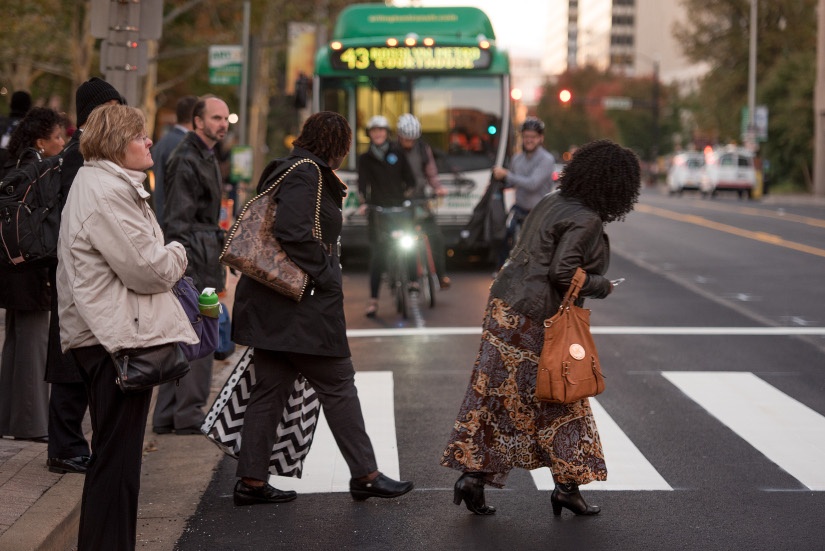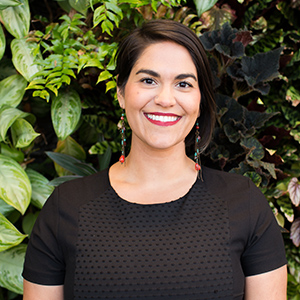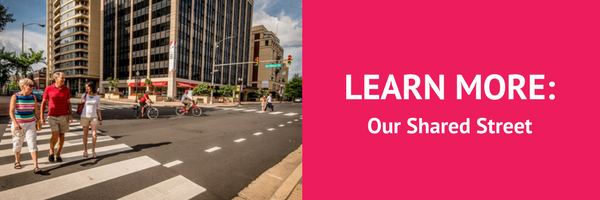Yesterday on my bike commute home, I witnessed an Arlington County police officer pull over a cyclist. The cyclist had run a red light at the intersection of Wilson Boulevard and N Oak Street and it took me about five seconds to go from Ugh! *eye roll* to, Yes, ok. Well done, officer! Bravo #OurSharedStreet YASSSS #blessed.
It was then I realized and accepted a few things:
- There is a natural bias based on your primary mode and sometimes (even with the best of intentions), it’s hard to break out of that bias
- All’s fair and legal when it comes to our shared street
- Every day, I’m learning how I can be a better biker, pedestrian, driver and general road user
My entire bike ride home, I kept thinking about what had happened and why this event was important for me, for that cyclist and for the community.
I thought about it from a lot of safety angles – safety to those biking, safety for pedestrians and safety for the drivers – and I realized that ACPD is doing the good work of helping everyone share the street.

Predictability and Accountability
As a biker myself, I heavily rely on the predictability of drivers and pedestrians knowing that for the most part, many will follow the general rules and signage of the road. So, when that cyclist ran the red light, I realized he wasn’t being predictable and finally the County’s PAL campaign clicked for me.
Before, when I would think of predictability, it was more in the sense of darting out in to traffic or perhaps, similar to a child running into the street to chase a ball. I now realize that it also means accountability for our actions on the road. If it is indeed everyone’s job to create safe streets, then we can’t hold certain modes to a higher standard due to our own bias. We all have the same responsibility to each other and the Arlington County Police Department is doing a great job using their resources to create a shared street by ticketing cyclists, drivers and pedestrians alike.
Changing Perceptions
I’ll never forget what a former colleague told me about being that biker. She said, “If I can serve as just one good example to show other modes that all bikers aren’t the same, then that’s good enough reason for me to stop at every single stop sign. No matter what.” I think about that statement a lot as I watch other road users around me either uphold or challenge a perception of a mode.
When Arlington Transportation Partners (ATP) Our Shared Street campaign started, I didn’t know where it was exactly headed. In fact, I still don’t. It’s growing and taking shape as the stories roll in. However, there is one thing I’ve learned so far and it’s that as much as I hope to change a perception through a blog, an event or even a simple conversation – it must really happen on each person’s terms. Just how my perception is continually challenged and changed, I hope everyone has that same opportunity in their commute or trip.
Try it in their mode
The adage of walking a mile in someone else’s shoe is really the only advice that seems appropriate at this point. So, I challenge everyone to bike a mile in heavy traffic and see how you feel. Try to turn your car into a crosswalk filled with people while cars blare their horns attempting to make a light. Cross a busy intersection with only a yellow sign indicating it is state law to yield to pedestrians.
Do you feel safe? Did you feel like you shared the street? Was your perception changed?
The infrastructure will never be perfect, just as our initial reactions to a situation will never be perfect – but I would urge you to stop and ask yourself if you are doing what you can to be a better pedestrian/driver/cyclist/road user. Your answer to this question, whether it’s yes or no, is why Our Shared Street is important.
Thank you again to the Arlington police officer who simply did their job yesterday, but also helped me be a better road user.
Photo Credit: Sam Kittner/Kittner.com for Arlington Transportation Partners


